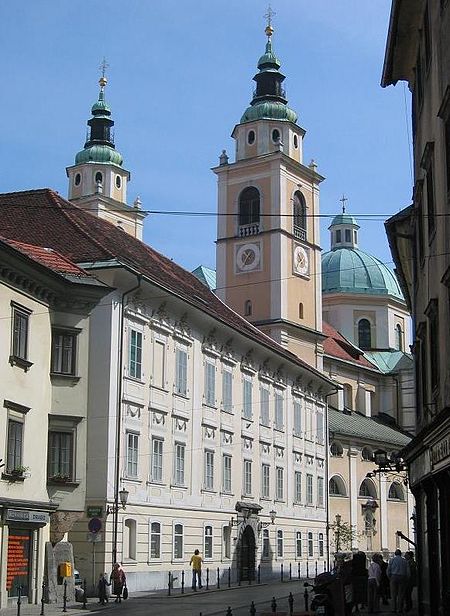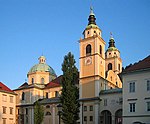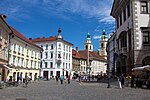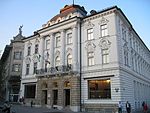Roman Catholic Archdiocese of Ljubljana
1460s establishments in the Holy Roman Empire1461 establishments in Europe15th-century establishments in Carniola1961 establishments in SloveniaReligion in Ljubljana ... and 3 more
Roman Catholic bishops of LjubljanaRoman Catholic dioceses established in the 15th centuryRoman Catholic dioceses in Slovenia

The Roman Catholic Metropolitan Archdiocese of Ljubljana (Slovene: Nadškofija Ljubljana, Latin: Archidioecesis Labacensis) is an ecclesiastical territory or diocese of the Roman Catholic Church in Slovenia.
Excerpt from the Wikipedia article Roman Catholic Archdiocese of Ljubljana (License: CC BY-SA 3.0, Authors, Images).Roman Catholic Archdiocese of Ljubljana
Mačkova ulica, Ljubljana Trnovo
Geographical coordinates (GPS) Address Nearby Places Show on map
Geographical coordinates (GPS)
| Latitude | Longitude |
|---|---|
| N 46.050630555556 ° | E 14.507622222222 ° |
Address
Škofijski dvorec (Škofijska palača;Nadškofijski dvorec;Nadškofijska palača)
Mačkova ulica
1104 Ljubljana, Trnovo
Slovenia
Open on Google Maps









